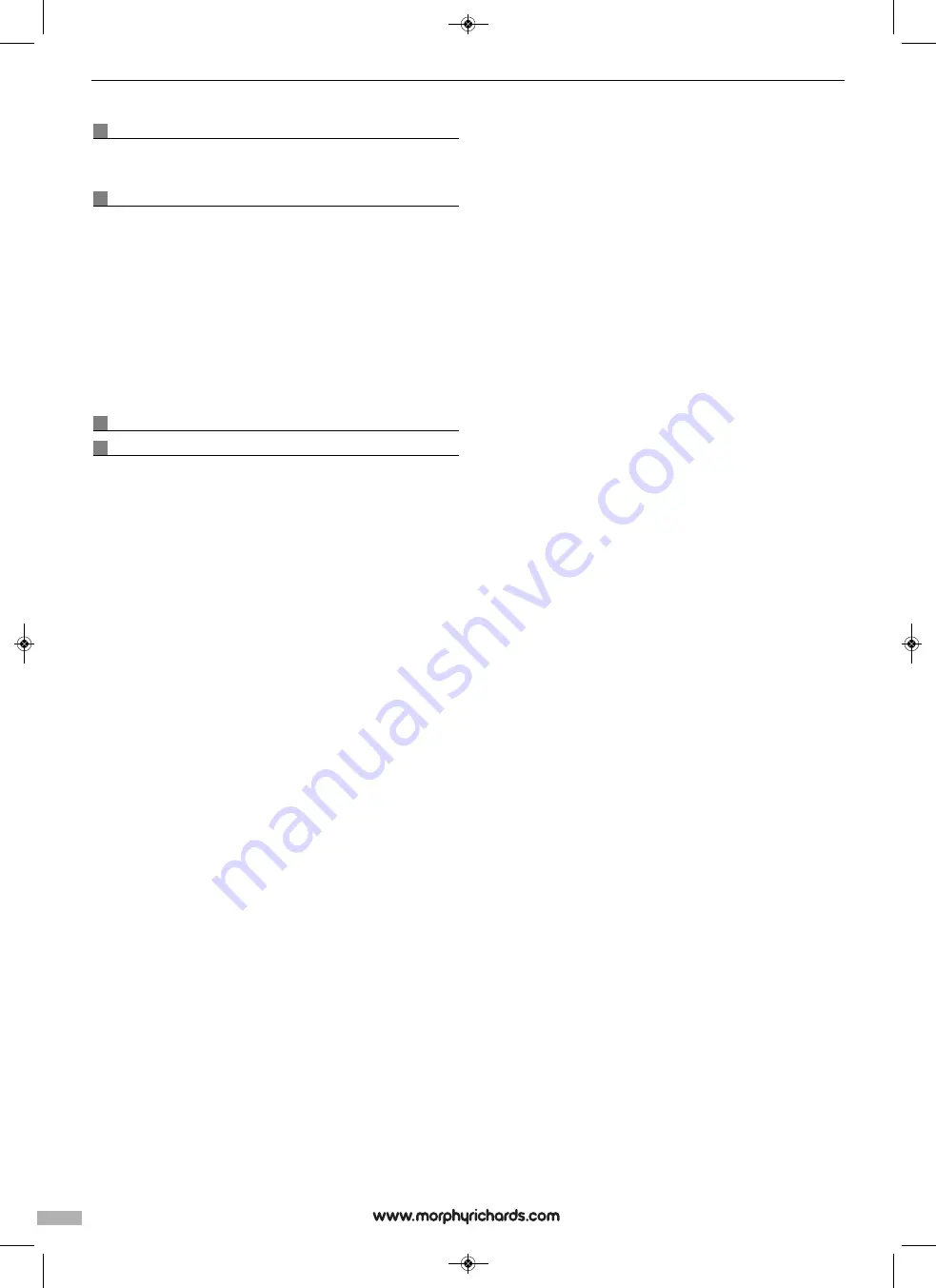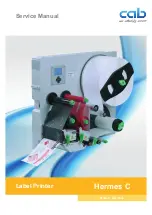
Remember strong white bread flour is required. A packet of this mix will produce a 700g loaf, just
over 1.5lb.
Ingredient Temperatures
All ingredients, including the machine and pan, and especially liquids (water or milk), should
be warmed to room temperature 21°C (70°F). If ingredients are too cold, below 10°C (50°F),
they will not activate the yeast. Extremely hot liquids, above 40°C (104°F), may kill the yeast.
Conversion Chart
Liquids, flour and others
We recommend that you use the cup provided for all recipes for consistency between brands
and types of flour.
The cup provided is based on the American cup measurement of 8 Floz.
For people who prefer to use their own measuring utensils, alternative measurements are in
millilitres (ml) and cubic centimetres (cc) for liquid measurement and grams (gm) for weight of
flour, sugar and fruit.
Note: A good quality set of accurate kitchen scales with divisions and accuracy to 2 grams are
required.
A measuring jug with divisions of 2 ml is required.
The tablespoon and teaspoon provided are required to measure the smaller quantities.
A set of British standard spoons with ‘scrape’ level tops can be used.
Do not use a kitchen tablespoon or teaspoon as they are inaccurate.
F.A.Q.
Questions about general performance and
operation.
Question 1
What should I do if the kneading blade comes out with the bread/
Remove it with a pair of plastic tongs before slicing the bread. Since the blade can be
disconnected from the pan, it is not a malfunction if it comes out in your bread.
Question 2
Why does my bread sometimes have some flour on the side crust?
In some cases, the flour mix may remain on the corners of the baking pan. When this happens,
it usually can be eaten or simply trim off that portion of the outer crust with a sharp knife.
Question 3
Why isn't the dough mixing? I can hear the motor running.
The Kneading Blade or baking pan may not be inserted properly. Make sure the pan is facing
the right way and that it has ‘clicked’ and seated into the bottom of the breadmaker.
Question 4
How long does it take to make bread?
Timings for each setting are outlined earlier.
Question 5
Why can't I use the timer when baking with fresh milk?
The milk will spoil if left sitting in the machine too long. Fresh ingredients such as eggs and milk
should never be used with the delayed timer feature.
Question 6
Why do I have to add the ingredients in a certain order?
This allows the breadmaker to mix the ingredients in the most efficient manner possible. It also
serves to keep the yeast from combining with the liquid before the dough has started to mix,
which is essential on the time delay.
Question 7
When setting the timer for morning, why does the machine make sounds late at night?
The machine must start operation when the time delay reaches the start time of the programme
so that the bread will be ready. These sounds are made by the motor when kneading the dough.
It is a normal operation, not a malfunction.
Question 8
The kneading blade is stuck in the bread pan. After baking how do I get it out?
The kneading blade may ‘stick’ in place after baking. Running warm or hot water over the blade
should loosen it enough to be removed. If still stuck, soak in hot water for about 30 minutes.
Question 9
Can I wash the baking pan in the dishwasher?
No. The baking pan and kneading blade must be washed by hand.
Question 10
What will happen if I leave the finished bread in the baking pan?
Whilst still in the breadmaker for the first hour after baking is complete the bread ‘keeps warm’
to prevent it becoming ‘soggy’. Leaving the bread in the breadmaker after the keep warm period
may result in a ‘soggy’ loaf of bread as excess steam (moisture) would not be able to escape.
Remove and allow to cool on a wire rack after baking to prevent this.
Question 11
Why did the dough only partially mix? Why didn't it mix completely?
The dough may be too heavy or dry. Also, the kneading blade or baking pan may not be
inserted properly. Ingredients may have been added in the wrong order.
Question 12
Why didn't the bread rise?
The yeast could be bad, past it’s sell by date or possibly no yeast was added at all. Also, if the
mixing was not complete, rising problems could develop.
Question 13
What is the minimum and maximum time a cycle may be delayed?
The maximum length of delay is 13 hours including the total cycle time. For example, Setting 1
(basic small) has a cycle time of 3:20. This start is delayed by a maximum of 9:40. The minimum
length of delay for each setting is 10 minutes. The delay clock increases and decreases in
increments of 10 minutes.
Question 14
How do I know when to add raisins, nuts, etc. to the bread?*
There is a beeper tone to signal that you may add raisins, nuts, etc. during the second kneading
cycle.
Note: See ‘Baking cycle times’ chart for ‘Add nuts & raisins’ time.
* Only applicable to model 48321 without fruit & nut dispenser.
In some cases, ingredients can be broken up during the initial kneading cycle. Each recipe
indicates the best time to add fruit and nuts to the dough.
Question 15
Why does my bread comes out too moist? What can I do?
Humidity may affect the dough. Add an extra tablespoon of flour. Also, high altitude may have
the same effect. Decrease the amount of yeast by ¼ teaspoon and decrease the sugar and/or
water/milk slightly.
Question 16
Why do I get air bubbles at the top of the bread?
This can be caused by using too much yeast. Decrease the yeast by ¼ tsp.
Question 17
Why does my bread rise and then collapse or crater?
The bread may be rising too much. To reduce the rate of rising, reduce the amount of yeast
and/or increase the amount of salt.
Question 18
Can I use my favourite bread recipes (traditional yeast bread) in my bread machine?
Yes, but you will need to experiment to get the right proportion of ingredients. Become familiar
with the unit and make several loaves of bread before you begin experimenting. Never exceed a
total amount of 5 cups dry ingredients (that includes the total amount of flour, oats, oatmeal,
bran). Use the recipes in this book to help determine the ratio of dry ingredients to liquid and
amounts of yeast, sugar, salt, and oil/butter/margarine to use.
We advise creating your own bread recipes using the basic mode, then progress to the others,
using the Baking cycle times chart as a guide.
Question 19
Is it important for ingredients to be at room temperature before adding them to the baking
pan?
Yes, even when the delay timer is being used. (Water must be between 21°C and 28°C).
Question 20
Why do the loaves vary in height and weight? The whole wheat/wholewheat breads are
always shorter. Am I doing something wrong?
No, it is normal for wholewheat and wholemeal breads to be shorter and denser than basic or
French breads. Wholewheat and wholemeal flour are heavier than white bread flour, therefore
they don’t rise as much during the bread baking process. This is also true for bread containing
fruit, nuts, oats and bran.
Question 21
Can I premix the yeast with water?
No, the yeast must be kept dry and put into the baking pan last, above the flour. This is
especially important when the delay timer is being used.
Question 22
Why is there a large hole in the base of the bread?
This hole has been created by the kneading blade. Sometimes this hole is larger than normal.
This is because the dough has rested to the side of the blade after the second kneading cycle -
normal with bread makers. You could position the dough evenly in the base of the pan.
12
BM48319MEE Rev3-A4-print_9225 47507 MEE pump - Jon 08/11/2013 11:14 page 12
Содержание 48319
Страница 116: ...116 BM48319MEE Rev3 A4 print_9225 47507 MEE pump Jon 08 11 2013 11 15 page 116 ...
Страница 117: ...117 BM48319MEE Rev3 A4 print_9225 47507 MEE pump Jon 08 11 2013 11 15 page 117 ...
Страница 120: ...BM48319MEE Rev 3 11 13 BM48319MEE Rev3 A4 print_9225 47507 MEE pump Jon 08 11 2013 11 15 page 120 ...













































